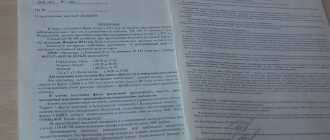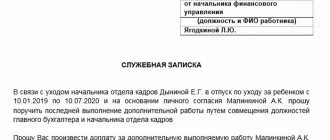Published:
13 December 2014 |
Author:
Evgeny Sakharov |
Category:
Uncategorized |
Tags:
email marketing, commercial proposal, step-by-step guide | Comments (1) If you work with a “cold” circle of clients, then you probably send them your commercial offer. And, most likely, not by regular mail, but by e-mail in PDF, DOC, etc. format.
But there is a problem. Few people would dare to open an attached file from a stranger.
It is for these purposes that the accompanying text is written, that is, a message in the body of the letter that motivates to open the attachment.
Learn how to write a compelling cover letter for your business proposal.
Why is it necessary?
The main purpose of a cover letter:
- Briefly introduce the contents of the CP and encourage the addressee to read the document in more detail.
- Do not clutter the commercial offer with unnecessary introductory and welcome information.
The covering letter may include:
- product catalogues;
- prices for services;
- timing of official company events, etc.
A cover letter is very important when sending out proposals.
As a rule, no one opens the attached files in such letters, but deletes them immediately. A well-written joint venture should encourage the recipient to pay a little attention to your proposal. The recipient should be willing to spend a few minutes familiarizing themselves with the material sent.
It is also wrong to refuse to draw up a joint venture if an oral agreement was reached with the recipient of the proposal by telephone or during a personal meeting. Remember that a few hours after successful negotiations, the potential customer may forget the essence of these negotiations, or he may completely forget about this conversation. He will be occupied with other matters and concerns, and he simply will not pay attention to a letter received without a covering letter.
Such a letter will be lost in dozens of other letters. Even a reminder in person or over the phone does not always produce results.
It is the cover letter that should prevent your proposal from getting lost and encourage a potential partner to get acquainted with it as soon as possible.
Studying the target audience is an important stage when working on a commercial proposal.
When I was working on a design proposal for a large supplier of chemical and construction products, I looked at reviews on review sites about their competitors.
What did these reviews give me?
- When a company sells several dozen types of cable, the names of which differ only by one letter or number, customers often do not receive exactly what they ordered. Similar products, but different. Unsuitable for their tasks.
- Buyers are often dissatisfied with the process of returning low-quality goods. It is long and laborious. In many cases, completely impossible.
- Buyers who have already agreed on a purchase can wait a long time (sometimes weeks) for an invoice for payment.
- Delivery time is often significantly longer than promised on the website.
- Companies often lie about their products being certified.
What did this information turn into when the text for the CP was ready?
Two small excerpts from a ready-made commercial proposal for the supply of construction products:
We have warehouses in Moscow and St. Petersburg. This means that you receive the ordered goods in these cities quickly. Not instantly, but many times (sometimes tens of times) faster than when buying from small companies that save on renting warehouses. With us you wait a day, with others – weeks.
"Company N" works directly with manufacturing plants. Yes I know. Everyone talks about work directly. We can confirm this statement with documents, prices (fewer intermediaries, less markup), delivery speed, and, in principle, any other evidence. This is true, and when you cooperate with us, you will notice it.
How to write correctly?
How to draw up this document? The cover letter can be written in any form, but there are general content requirements, such as:
- Appeal. It is better to start a letter with a greeting to a specific person. This will not create the appearance of a mass mailing. After the greeting, introduce yourself.
- Presentation of the company. Briefly tell us about your company. List its qualities (15 years on the market, extensive experience, etc.).
- Services. Present the company's services or products.
- Advantages. Tell us why your services are better than those of your competitors. Advantages of cooperation and special conditions.
- Ending. The cover letter ends with the sender’s polite signature: “With respect, ... (position, company name and full name of the sender).”
Describing benefits and benefits is the cornerstone of the entire cover letter. Pay maximum attention to this section. Interesting a potential partner with favorable conditions is an important step for the possibility of further cooperation.
Cover letter requirements
A cover letter is usually attached to a business proposal, marketing kit, or other document presenting products or services to a potential client. It would seem that what is so difficult here? Write a short text of two or three paragraphs and briefly tell the essence. But many people don’t know how to do this, so they make two mistakes:
- send an offer without a cover letter and then there is a risk that the letter will be sent to spam
- they write long and confusingly, which discourages the desire to read the commercial proposal itself
The purpose of a cover letter for a commercial proposal is to interest the client. To do this you need:
- attract attention
- solve the problem of
- push him to follow the link (perform an action)
Example text
Below is an example of such a letter required before sending a special offer:
Good afternoon, dear ______________________! Welcome to the company LLC _________________, Moscow - the exclusive representative of _________________________________________________________ in Russia. We offer you favorable terms of cooperation. We offer:
- products of the highest quality;
- the best prices;
- discounts and deferments;
- prompt delivery.
In the attachments you will find the price list, product presentation and detailed conditions for working with our company. For any questions, please call: _________________. Sincerely, regional manager of LLC _________________
When and how is it sent?
A commercial proposal with a cover letter can be sent on behalf of the entire company, or from specific divisions, departments or employees. They can be sent either to a specific person or to a group of recipients.
If you are sending a cover letter for a commercial proposal by regular mail, it is advisable to print it on the organization's letterhead.
It is also necessary to note several points when writing a joint venture:
- Objectivity. Write information only on the case and specifically on your proposal. There is no need to write well-known truths (“London is the capital of Great Britain”) or “throw water” (“The sunny, warm days of May inspire us to new labor feats”).
- Brevity. People are too lazy to read long texts. The shorter your cover letter, the more likely it is to be read. Try to present all the important information (the benefits of working with you) in the most concise form.
- Do not use the phrase “commercial proposal” anywhere in the letter. This phrase is psychologically frightening. Try to use different words. And put more emphasis on the benefits of cooperation with you.
- Simplicity and clarity. There is no need to get carried away with the epistolary genre and pile up your cover letter with professional terms and professional language. Keep it simple. The recipient will have the feeling that they are being addressed specifically to him.
- Inspiration to action. Indicate what the recipient should do if he is interested in the offer: view the attached file, visit the website, call the specified number, etc. It is not always clear to potential clients what needs to be done to start cooperation. Making the procedure clear will increase the likelihood of a response from customers.
A cover letter can have different purposes. It can supplement some information, notify about something, or clarify ambiguities. We invite you to learn about these types of joint ventures: for a resume and declaration, for various companies, for the Social Insurance Fund and for a package of documents. We have also prepared articles for you in which you will find detailed instructions on how to draw up this document for the act, for the employer and for the Pension Fund of the Russian Federation.
Rules of negotiations: how to write emails - Offtopic on vc.ru
The main tool of a manager is communication. Today I’m thinking about its most interesting type - correspondence, where there is only one channel for exchanging information - semantic.
Correspondence
Correspondence is like a document. Unlike a personal meeting, correspondence saved in an email inbox will not change its meaning over time. This may one day play a good role if the agreement is consolidated by correspondence, so it is advisable to consolidate the results of any negotiations with a meeting report.
The meaning of communication is the transfer of information to obtain the desired reaction. The difference between correspondence and live speech: you have only one channel for transmitting information - text. To avoid misunderstandings, avoid ambiguity. You can give your interlocutor the opportunity to draw his own conclusions, but do not allow him to guess the content of the letter.
To prevent information from being distorted, it must be presented clearly.
The main rule of writing is that it should be clear, concise and to the point.
Letter subject
The subject of the letter should reflect its content. If the content of the correspondence has changed since the topic was assigned, it will change.
Greetings
The greeting is issued in one phrase, without scraping. If there are several recipients in the letter and the letter is addressed to everyone, we use a general greeting.
If we write to a specific person, we address him by name, regardless of the number of people in the copy of the letter.
In the case when you write to one person, addressing them by name, and for some reason another person from the copy answers, we welcome him to respond to the letter.
Introduction
It is advisable to make an introduction if the text itself has three or four paragraphs. We write down the essence of the entire content at the very beginning of the letter. The introduction should not be complicated and should not contain questions or suggestions. It serves as a continuation of the topic of the letter, the purpose is to briefly talk about the subject of conversation.
Main content
A paragraph should contain one idea and several sentences that complement the main statement. You should clear out all thoughts from the paragraph that do not prove or complement the main statement - put them in separate paragraphs or remove them from the letter. A one-line paragraph breaks the rhythm of the letter. It is advisable not to allow this to happen.
https://youtu.be/8148tjtAv6g
Each paragraph can have its own subheading, especially if there are several topics in the letter. Mandatory if there are several topics in one letter, and one of them goes beyond the scope of one paragraph.
Conclusion and questions to the interlocutor
Questions and suggestions for discussion are included at the end of the letter. Being in the middle, they risk being undetected.
Signature
A signature is a technical element of a letter that should not be larger than the rest of the letter. People go there a couple of times in their lives when they need to find out the phone number of the author of the letter. Your name and email address can be seen even without a signature.
The signature should be informative and minimalistic. What you definitely don’t need to include is the company logo and mailing address. Sometimes signatures contain texts about the confidentiality of correspondence and requests not to print letters so as not to spoil the environment - this is a clinic.
A common case is one-word letters with a multi-story signature.
Files in attachment
If we attach pictures as illustrations to a letter, it is better to post them in the body of the letter rather than post them as a link or attachment with a link to a file from the text. In this case, we adjust the size of the picture to such a state that it is readable, but does not occupy the entire screen. If pictures are sent for use outside of correspondence, we include them as attachments.
If there are a lot of files, add them to the archive. It's better to use ZIP archives - the default format for macOS and Windows. To work with specific formats like RAR, additional tools will be required, which is inconvenient.
If the file archive is large, use a file hosting service. This is especially true if the file is sent by email to a person from a large bureaucratic company. They often have a limit on the size of accepted files.
Ethics
Email ethics are based on common sense and context. The language in which the letter is written depends on who receives it. If the interlocutor is not familiar to us, we write neutrally and respectfully. Keep it simple and specific. And click “Reply all” when there are several people in the copy.
Email response time
The difference between email and instant messengers is that a delay in response is allowed. However, there is no point in allowing delays of more than a few hours if you can give an answer right away. If the answer requires time to think, inform your interlocutor about this, and guide him by the time of the answer. There is nothing worse than uncertainty, especially if the interlocutor has something depending on your answer.
Professional vocabulary
Avoid technical terms and abbreviations unless you are sure that the other side will understand you correctly. The same thing with professional jargon and heavy vocabulary. Our goal is to get what is required, and not to show our own erudition.
Smart words will not make you more professional. If you cannot do without professional vocabulary, and you are not sure that the interlocutor will read it correctly, you can give an explanation. But if it is possible to simplify the letter, simplify it.
Communication with colleagues
Regardless of whether you are writing to a client, business partner or colleague, avoid familiarity, abbreviations and vernacular. A colleague is the same person and can also misunderstand you.
For some reason, it is believed that if a person works with you, he can and should tolerate a different attitude than an external client. However, if an external client does not care about how you communicate, you should work with a colleague.
The fact that a person works with you in the same office does not give you the right to get personal and communicate without respect.
Conflicts
It is better to resolve conflicts in person - the channel for transmitting information through correspondence is not sufficient. When resolving a conflict through email, everyone will definitely see something different in the words.
Under no circumstances respond to an angry letter right away - let your interlocutor let off steam. If you write an angry letter yourself, save it in GoogleDoc, re-read it in a couple of hours, and then decide whether it’s worth sending it or not.
Emotions
An exclamation point in email correspondence, expressing emotions using capslock is bad manners. Smile emoticons - only if you are sure that they will understand you correctly.
The letter is designed to convey meaning, not emotion - a person will still read it in his own way. If you really want to convey emotions, it’s better to call.
Trash words
Maxim Ilyakhov wrote about infostyle and made a website that helps clear text from garbage. You can get your bearings, but it’s not a panacea. Don’t mindlessly take information style for granted. If the text is not readable, it does not matter how many points it has according to Glavred.
Summary
- Keep it simple, write clearly.
- Think about who will read your letter.
- Don't sort things out by email.
- Clean up your signature.
Material published by user. Click the “Write” button to share your opinion or talk about your project.
Write
Source: https://vc.ru/flood/33685-pravila-peregovorov-kak-pisat-elektronnye-pisma









